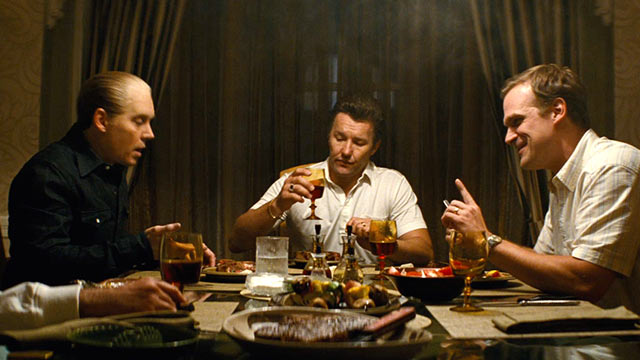With their new farce “Hail Caesar!” the Coen Brothers
conjure up the glory and garishness of gimmicky 1950s Hollywood. Like their
other broad comedies, such as the cult-hit “The Big Lebowski,” their Americana
ode to The Odyssey “Oh Brother, Where Art Thou” and the still-underrated espionage
spoof “Burn After Reading,” “Hail Caesar!” is less interested in tight
storytelling or following a discernable plot than it is with putting a genre’s idiosyncrasies
under a microscope and under zooming in until they appear absurd. There’s a love displayed for the type of
bloated studio-era schlock that the Joel and Ethan are spoofing and that love
shines through in perfect recreations of iconic film moments and stock genre
tropes. In fact, the verisimilitude of the spoof is so earnest in its presentation
that the comedy often gets lost in the movie’s high-concept production values.
If there is a single story to follow it’s that of Josh
Brolin as a studio executive named Eddie Mannix - a no-nonsense busy-body who’s
trying to juggle a handful of large film projects being mounted on the lot of
Capital Pictures. The key film in development is a roman swords-and-sandals epic
that features big-time prestige actor Baird Whitlock, played by George Clooney
as a witless Charlton Heston type. The production is put on hold when an extra
kidnaps the actor and holds him for ransom at a nearby beach mansion, occupied
by a group of disgruntled Hollywood writers turned communist. Alden Erhenreich plays a country bumpkin movie star
who also finds himself caught up in the mystery.
There’s no lack of whimsy here and the movie is full of
moments of pure exhilaration within its reimagining of Hollywood cinema,
including the best song and dance sequence I’ve seen in the last 15 years, starring
Channing Tatum and a group of actors dressed as sailors. Key scenes play out
like sketch comedy, such as a silly dialogue set-piece between a small group of
preachers, priests, and rabbis who are brought in to share their opinions on
the depiction of Christ in one of the movies within the movie, as well as another
scene in which Erhenreich tries to choke down his thick southern accent for a director
played by Ralph Fiennes after getting cast last-minute in a formal costume
drama.
Had these scenes, or the many others like them, existed
without the connective tissue of the plot to justify their use within the film,
they could support themselves as Funny
or Die videos or SNL digital shorts. The movie never quite gels as a story
because said connective tissue--Josh Brolin and George Clooney’s overarching plot—is
never tended to with the same amount of interest or care. As the audience’s cypher Brolin never drums
up enough pathos or relatability, or even enough of his own comedic presence—like,
say, Jeff Bridges does as ‘The Dude’—to pull together all of the competing plot
threads and many muddled themes regarding industry politics, personal morals
and religion. That said, you can never ding the Coens for lack of trying.
Ehrenreich as the dopey Hobie Doyle, Tilda Swinton as a pair
of yellow journalist twins and Scarlett Johansson as a jaded starlet all give
loopy, mannered performances that live up the bigness of the movie’s comedic
style, and if the “Hail Caesar!” had used one of them to follow as our main
character, instead of Brolin’s bland almost-detective, it may have created a
better sense of dramatic traction. The larger than life aesthetic gags are too
slick and impressive on a technical level to register as comedy and a movie
this big and this silly can’t sustain cinematic parlor tricks on this kind of
scale without being a lot funnier. Ironically, the final result is a film that
resembles the type of bloated, misguided star vehicles that the Coens are
working so hard to send up.
Grade: C+
Originally Published in the Idaho State Journal/Feb-2016
Listen to more discussion about "Hail Caesar!" on this week's Jabber and the Drone Podcast.



